The all-new Sabrent tool-free USB Type-C dual docking station and cloner for NMVe M.2 SSDs (EC-SSD2) offers an impressive mix of versatility and functionality. The Sabrent docking station and cloner is quite interesting as it can clone SSDs offline without having to connect directly to a computer. The Sabrent docking station and cloner is also quite handy if data needs to be transferred quickly as direct-attached storage, with speeds up to 10Gbps.
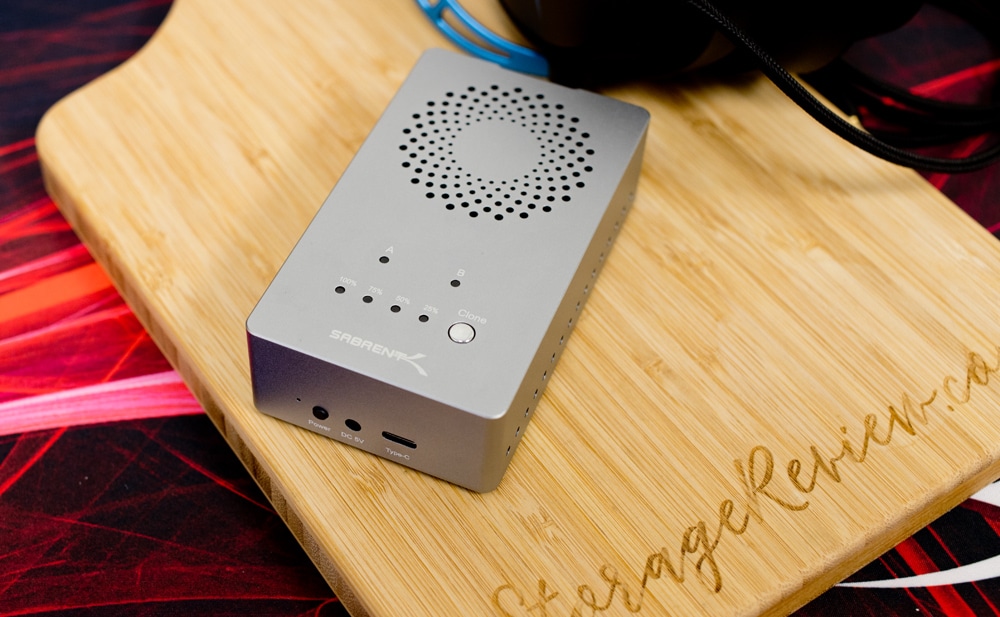
Offline M.2 NVMe SSD Cloning
The cloner gives enterprise users and consumers a wide range of versatility since it offers offline cloning. With offline cloning, IT admins can quickly copy OS’s to new M.2’s and pop them in new machines making for quick deployment. Even here at our lab, we use it to efficiently copy boot drives for servers since installing software “by hand” can take some time, the Sabrent cloner makes quick work of it.
In terms of compatibility, the Sabrent docking station and cloner offer support for NVMe form factors of 2230/2242/2260/2280. It is not compatible however with M.2 SATA or AHCI SSDs. This docking station/cloner also requires systems to be Windows 7 or higher / Mac OS 10.5 or higher / Linux Kernel 2.4 or higher.
Sabrent Docking Station Design and Build
The Sabrent docking station and cloner is made entirely of aluminum, which is necessary because of the heat the drives will produce in action. Since writing to drives can be demanding from M.2’s, the device will get hot, however, Sabrent has included some engineering features that will help dissipate the heat and prevent thermal throttling.
On the top of the docking station, the most notable feature is the spiral holes that perform an important function rather than just design. These holes provide the most ventilation on the device as Sabrent has been able to include a small but powerful fan that helps the thermals of the docking station.
Moving down the front of the device, there is an A and a B with an LED right underneath that lets the user know if there are drives in use in each slot. Underneath that, there is a progress bar identified with LEDs that is a good indicator for the user. Finally is the start button for the cloning process; it is a solid black button that says “clone” (not hard to miss).
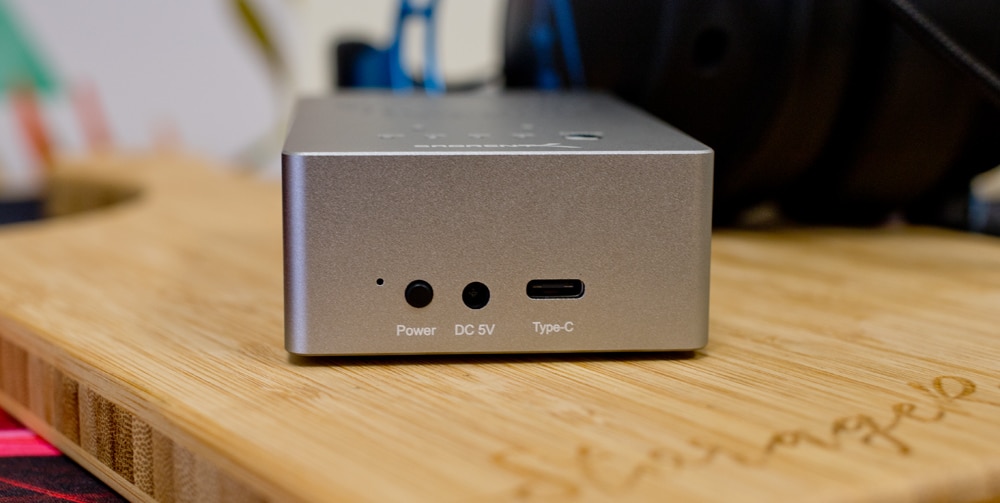
On the front side of the Sabrent docking station, there is the Type-C port, the power adapter port, and the power button. Although simple, it is a good design to have as little as necessary on a device like this as it can get hot, so the fewer buttons or holes are good as the case was designed to act as a heatsink. Even on the sides of the dock, there are ventilation holes to help with thermals.
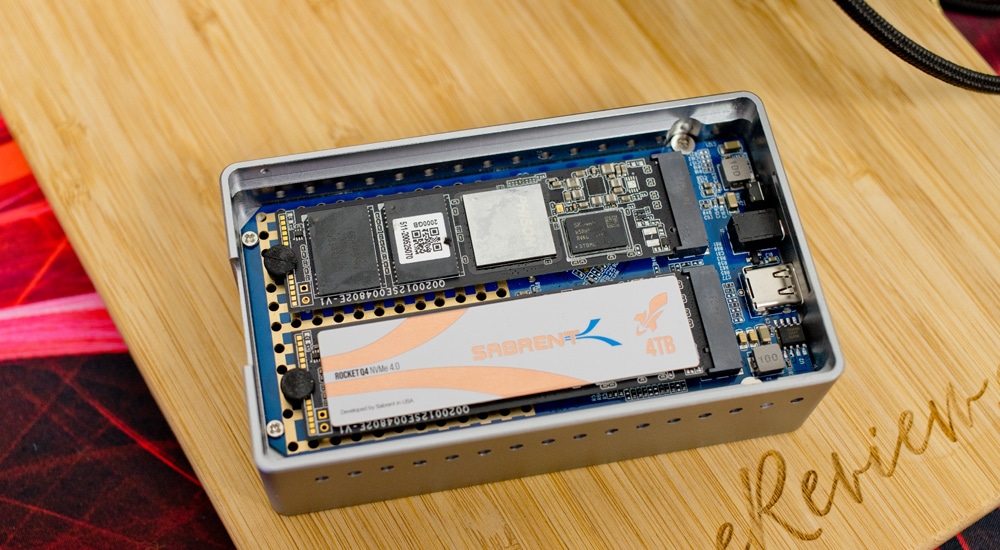
Setting the NVMe SSD’s inside the docking station is very simple to do. Sabrent has made the docking station a tool-free design which allows users to quickly swap between docked drives. The drives are locked into place with rubber fasteners that go in the notch on the M.2’s and are simply pushed into the holes that are on the baseboard. This process is much easier than screws which allow for anyone to effectively put the drives into place.
The Sabrent docking station does come with two USB cables: Type-C to Type-C and Type-C to Type-A. It is nice that Sabrent includes both these cables as not every device has the ability to support a Type-C cable so the Type-A cable is good to have. Both of these cables are USB 3.2, which allow for speedy data transfer, and are also backward compatible with USB 3.1 and USB 3.0 at their respective limits.
One last note on the power supply. Sabrent includes a 5V/4AMP external power supply. Since the power supply is external, this ensures safety and stability while using the docking station and cloner. This also facilitates the offline cloning functionality.
Direct-Attached Performance
While the cloner isn’t necessarily designed to be used as an external enclosure, it easily can perform that task when not cloning drives. The USB-C Gen2 connection on it is good for about 10Gbps or around 1GB/s read and write.
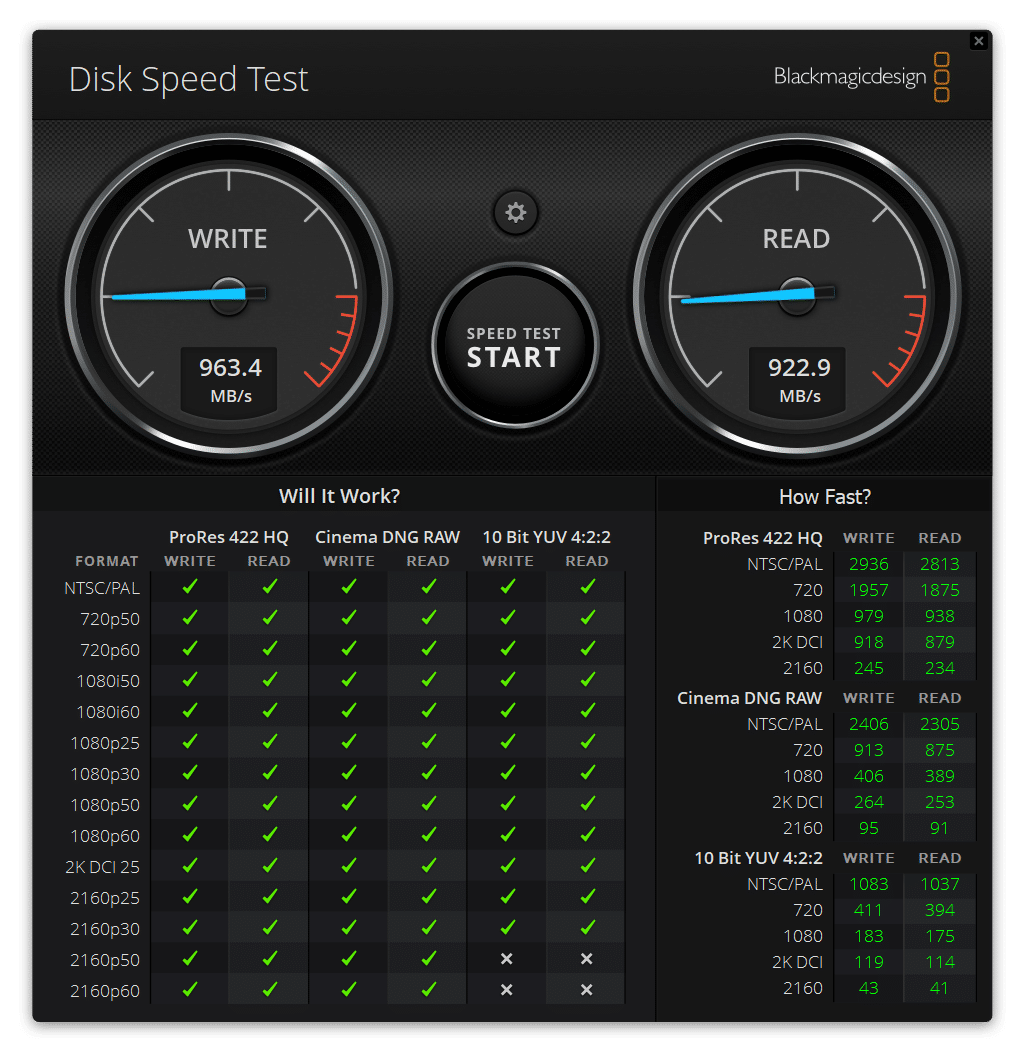
The price point on the Sabrent docking station and cloner comes in right at $113.99 from Amazon. This price falls right in line with other devices like this on the market and even comes in cheaper than the Yottmaster Cloner, which comes in at $139.99.
The biggest difference between the Sabrent docking station and cloner and other devices is the size difference and the fan on the inside of the device that actively cools the device. There are quite a few cloners and docking stations that don’t have a small footprint, however, this Sabrent docking station does, coming in at only 4in x 2.5in x 1.25in.
Conclusion
Overall, the Sabrent docking station and offline cloner is an interesting device as it has a wide range of versatility. Some opportunities are using the cloner in the enterprise world to deploy new machines with company-specific software or even in a personal lab where a new server needs a boot drive.
On an important note about the cloning process, USB cables should not be connected while the process is running as it could interfere with the data migration. The cloner may also get warm, so make sure it is in a secure place and also recommended not to touch it.
Once cloned, the newly cloned drive will be offline, so using disk management is necessary to turn the drive online. If the target capacity was more than the original drive, the empty space that is left over will be marked as unallocated, so if you want to use the rest, allocating the rest of space through disk management is required. With all said and done, the Sabrent cloner gets the duplicating job done.
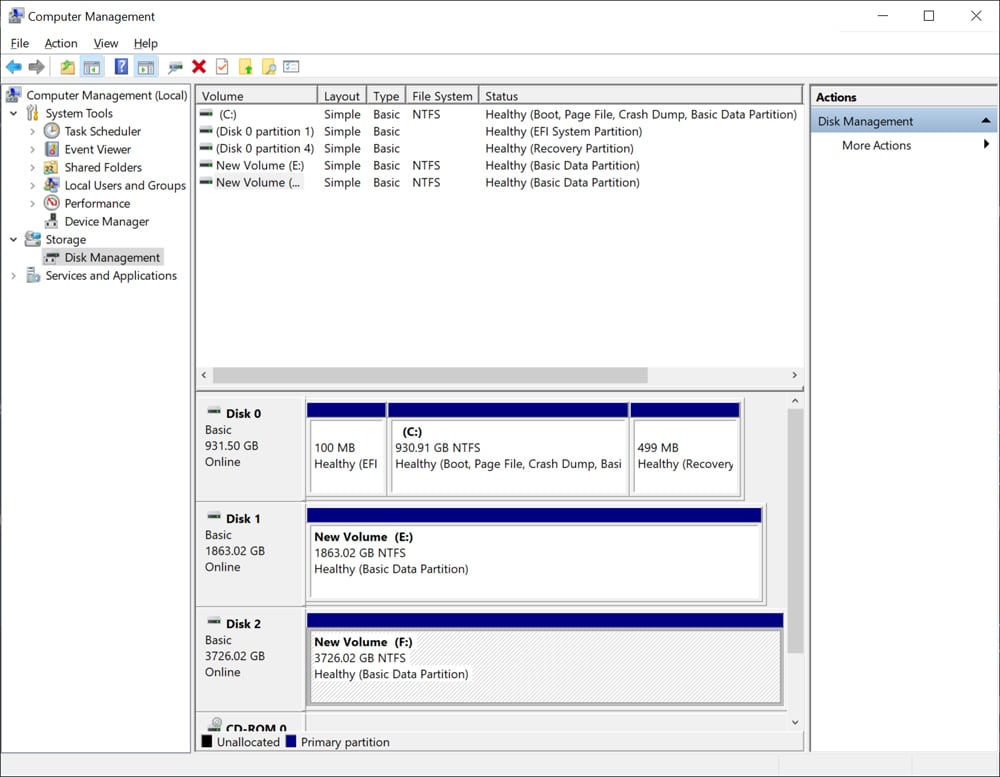
The Sabrent dock station and cloner makes quick and efficient work and the quick start guide included provides enough tips and tricks to help guide even basic users through the process successfully. If you are looking for an NMVe M.2 docking station and cloner, the Sabrent dual docking station is right up to the task and can even handle the cloning process entirely offline from any other computer.
Sabrent Docking Station from Amazon




 Amazon
Amazon